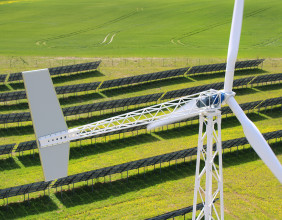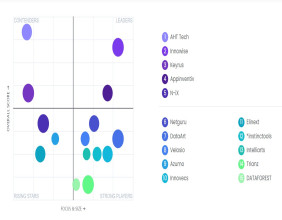Highlights
- Leading energy futures and options exchange in London.
- Specializes in crude oil, natural gas, and energy derivatives trading.
- Influences global energy prices and risk management strategies.
The International Petroleum Exchange (IPE) is a prominent energy futures and options exchange based in London. Established in 1980, the IPE was created to provide a centralized marketplace for trading energy commodities, particularly crude oil, natural gas, and other energy derivatives. It played a crucial role in shaping global energy markets by offering standardized contracts and transparent price discovery mechanisms. Today, the IPE is recognized as one of the leading energy exchanges in the world, influencing global energy prices and providing essential tools for risk management to market participants, including energy producers, consumers, traders, and financial institutions.
History and Evolution of the International Petroleum Exchange
The International Petroleum Exchange was founded in 1980 to meet the growing demand for a transparent and efficient marketplace for energy trading. Before the establishment of the IPE, energy trading was conducted primarily through over the counter (OTC) transactions, which were often opaque and lacked standardization. The IPE introduced standardized contracts and a regulated trading environment, promoting greater liquidity and price transparency.
Initially, the IPE focused on trading crude oil futures contracts, particularly Brent crude oil, which quickly became the global benchmark for oil pricing. In the 1990s, the exchange expanded its product offerings to include natural gas and other energy derivatives, further solidifying its position as a key player in the global energy markets.
In 2001, the IPE transitioned from open outcry trading to electronic trading, enhancing trading efficiency and accessibility. In 2005, the exchange was acquired by the Intercontinental Exchange (ICE), a leading operator of global exchanges and clearinghouses. The IPE was rebranded as ICE Futures Europe, but it continues to operate as a leading energy trading platform under the ICE umbrella.
Role and Importance of the IPE in Global Energy Markets
The International Petroleum Exchange plays a crucial role in the global energy markets by:
- Price Discovery and Benchmarking:
- Facilitates transparent price discovery for energy commodities, influencing global pricing.
- Sets benchmark prices for crude oil and natural gas, including the widely recognized Brent crude oil benchmark.
Example: Brent crude oil prices on the IPE serve as a reference for global oil pricing.
- Risk Management and Hedging:
- Provides market participants with risk management tools to hedge against price volatility.
- Enables energy producers, consumers, and traders to lock in prices and manage financial exposure.
Example: An airline hedges against rising fuel costs by purchasing Brent crude oil futures contracts on the IPE.
- Liquidity and Market Access:
- Offers a liquid and accessible marketplace for trading energy futures and options.
- Attracts a diverse range of participants, including energy companies, financial institutions, and speculators.
Example: A global energy trading firm utilizes the IPE for liquidity in crude oil futures contracts.
- Standardization and Transparency:
- Ensures standardized contract specifications, promoting transparency and reducing counterparty risk.
- Regulated by the Financial Conduct Authority (FCA) in the United Kingdom, ensuring market integrity.
Example: Standardized Brent crude oil futures contracts enhance market efficiency.
Key Products Traded on the IPE
The International Petroleum Exchange offers a range of energy futures and options contracts, including:
- Brent Crude Oil Futures and Options:
- The most actively traded contract on the IPE, serving as the global benchmark for crude oil pricing.
- Traded in U.S. dollars per barrel, with contract sizes of 1,000 barrels.
Example: A commodity trader purchases Brent crude oil futures to speculate on rising oil prices.
- Gas Oil Futures and Options:
- Contracts for low-sulphur gas oil, widely used as diesel fuel in Europe.
- Traded in metric tons, with pricing influenced by global supply and demand dynamics.
Example: A European refinery hedges against gas oil price fluctuations using IPE futures.
- Natural Gas Futures and Options:
- Contracts for UK Natural Gas, serving as a benchmark for European natural gas prices.
- Traded in terms, reflecting the heating value of natural gas.
Example: A utility company locks in natural gas prices to manage energy cost risks.
- Other Energy Derivatives:
- Includes contracts for electricity, coal, and carbon emissions allowances.
- Supports hedging and risk management for a broad range of energy commodities.
Example: A power producer hedges against carbon costs using IPE emissions contracts.
Trading Mechanisms and Platforms
The International Petroleum Exchange operates through the following trading mechanisms:
- Electronic Trading Platform:
- Transitioned from open outcry to electronic trading in 2001, enhancing speed and efficiency.
- Utilizes the ICE trading platform, offering 24-hour access and real-time price updates.
Example: A trader executes a Brent crude oil futures contract electronically via the ICE platform.
- Clearing and Settlement:
- All trades are cleared through ICE Clear Europe, ensuring counterparty risk management.
- Daily mark-to-market settlements provide transparency and minimize credit risk.
Example: A financial institution's positions are cleared and settled through ICE Clear Europe.
- Regulatory Oversight:
- Regulated by the Financial Conduct Authority (FCA) in the U.K. to ensure market integrity.
- Adheres to strict compliance and reporting standards, fostering investor confidence.
Example: The IPE complies with FCA regulations to maintain a transparent trading environment.
Influence on Global Energy Markets
The International Petroleum Exchange significantly influences global energy markets by:
- Setting Global Benchmarks: Brent crude oil prices on the IPE are widely used as a reference for global oil pricing.
- Price Volatility and Risk Management: Provides tools for managing price volatility and financial exposure.
- Investment and Speculation: Attracts speculators seeking profit opportunities from price fluctuations.
- Economic Impact: Influences energy prices, impacting economies worldwide, particularly energy-importing nations.
Example of IPE's Market Impact
Consider the following example:
- An oil-producing country sets its export prices based on Brent crude oil futures traded on the IPE.
- During geopolitical tensions, Brent crude prices rise sharply, affecting global energy markets.
- An airline hedges against rising jet fuel costs by purchasing Brent crude oil futures on the IPE.
- The price increase impacts global inflation, influencing monetary policies worldwide.
Conclusion
The International Petroleum Exchange (IPE) is a leading energy futures and options exchange based in London, playing a vital role in global energy markets. By offering standardized contracts and transparent price discovery mechanisms, the IPE influences global energy prices, facilitates risk management, and enhances market liquidity. It is renowned for its Brent crude oil futures, which serve as the global benchmark for oil pricing. The transition to electronic trading and the acquisition by ICE have further strengthened its position as a premier energy trading platform. Despite challenges such as regulatory changes and market volatility, the IPE continues to shape global energy markets, providing essential tools for risk management and investment opportunities. Understanding the IPE's role, products, and influence is crucial for energy market participants seeking to navigate the complexities of global energy trading.




